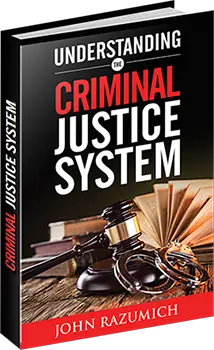Most people are familiar with the Miranda Warnings from TV shows. Just about everyone can recite them verbatim: “You have the right to remain silent. Anything you say can and will be used against you in a court of law. You have the right to an attorney. If you cannot afford an attorney, one will be provided for you. Do you understand the rights I have just read to you? With these rights in mind, do you wish to speak to me?”
While everyone has at least heard of the Miranda Rights, most people don’t know how they came about, where and when they came from. That is the subject of this article as well as how they became a Constitutional Right not simply a recommendation in interactions between police and those they want to question.
40 Years Ago During The Johnson Administration
The Miranda Rights can vary slightly between states and jurisdictions within states. They are pre-printed on a card that every police officer carries and typically reads verbatim. The Miranda Rights came about during the 1960’s when the Johnson Administration made a number efforts at social reforms focused on cleaning up the way the government interacted with its citizens. It was known as the Great Society. One area they looked at was how citizens interacted with the police and what rights for citizens had for interacting with the police.
The Miranda Rights specifically came about from a case in Arizona in 1963 when Ernesto Miranda was picked up and arrested for the kidnapping and rape of an 18-year-old woman 18 days prior to his arrest. He was put into an interrogation room and was held and questioned for 2 hours. He then signed a pre-printed form confessing to the crime. The form stated that Miranda was informed of and knew his rights. While it seemed straightforward at the time, the fact was that Miranda did not know what his rights were. He was subsequently found guilty and sentenced to 20 – 30 years in prison.
Meanwhile, his attorneys appealed, and the case went before the Arizona Supreme Court, which upheld the conviction and sentencing. As a last-ditch effort the attorneys went to the U.S. Supreme Court and the case was accepted for review.
A Narrow Win And Extremely Controversial Decision
The U.S. Supreme Court, led by Chief Justice Earl Warren, in a narrow 5/4 decision agreed that Miranda’s confession was made involuntarily and that he was not informed of his rights. Thus the Miranda Rights were born amid a great deal of controversy and fear. The fear being that criminals would never be arrested or convicted again. Editorials of the day argued the unfairness of advising suspects of their rights. If social media had existed then, it would have been very ugly. Fortunately the nay-sayers were wrong, and the Miranda warnings have been unchanged in more than 40 years.
The Totality Of Circumstances Must Be Taken Into Consideration
In 1968, The Johnson Administration enacted the Omnibus Crime Control and Safe Streets Act. In combination with the Miranda Rights Act, another term came into use: The totality of Circumstances. In interactions with police whether you are taken into custody for questioning or stopped for a traffic violation, you have a right to remain silent. And it doesn’t matter how long you are silent. The basic question boils down to whether you are free to leave or are being detained, held against your will. It also includes whether a confession was voluntary or involuntary. Everything hinges on whether you agree to speak to police and respond to questions voluntarily or if you were the subject of Custodial Interrogation, a subset of Involuntary interrogation.
What Happened To Ernesto Miranda
Miranda was a groundbreaking decision in U.S. history and when Ernesto Miranda was released from prison in the 1970’s he made a meager living as somewhat of a minor celebrity in bars in Arizona. He sold signed Miranda Rights cards for $1.50. Miranda was in and out of trouble and eventually was killed in a bar fight in 1976. And, yes, the man suspected of killing him was read his Miranda Rights.






